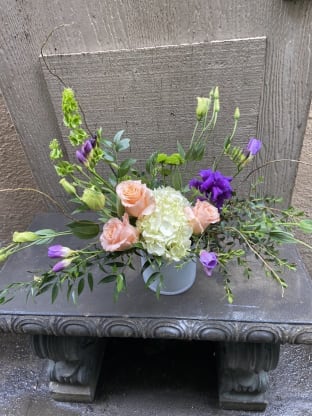The language of flowers, also known as floriography, is a symbolic way of communicating through the use of flowers. It has a long and fascinating history that dates back centuries, and has been used by cultures all around the world.
One of the earliest known examples of the language of flowers can be traced back to ancient Egypt, where flowers were used as part of religious ceremonies and to convey messages of love and affection. The lotus flower, for example, was highly regarded in ancient Egypt and symbolized rebirth, purity, and divine beauty.
In Victorian England, the language of flowers became especially popular, as it was considered improper for young couples to express their feelings openly. Instead, they would send each other bouquets of flowers, each one carefully chosen to convey a specific message. This tradition was especially prevalent in upper-class society, and many books were published during this time that provided guides on the meanings of different flowers.
Some of the most well-known flowers and their meanings include:
·Roses: Perhaps the most well-known of all flowers, roses have a long and rich history of symbolism. Red roses are typically associated with love and passion, while pink roses symbolize gratitude, admiration, and appreciation. Yellow roses are often given as a symbol of friendship, while white roses are associated with purity and innocence.
·Daisies: Daisies are often seen as a symbol of innocence and purity, and are associated with new beginnings. They can also be used to convey a message of loyalty, and are often given as a sign of lasting friendship.
·Lilies: Lilies are often associated with funerals and mourning, but they can also be used to convey a message of hope and renewal. The white lily, in particular, is associated with purity and innocence, while the yellow lily symbolizes gratitude and thankfulness.
·Sunflowers: Sunflowers are often associated with happiness, optimism, and positivity. They are also seen as a symbol of loyalty, and can be given as a sign of lasting friendship or a commitment to a long-term relationship.
·Tulips: Tulips are often associated with love and romance, and are often given as a sign of affection. Red tulips, in particular, are associated with passionate love, while yellow tulips symbolize friendship and cheerfulness.
·Orchids: Orchids are often associated with beauty and luxury, and are often given as a sign of admiration. They can also be used to convey a message of love and romance, especially when given in a bouquet with other flowers.
Overall, the language of flowers has a rich and fascinating history that continues to be used today. Whether you are looking to express your feelings of love, gratitude, or friendship, there is sure to be a flower that can help you convey your message in a meaningful way.

